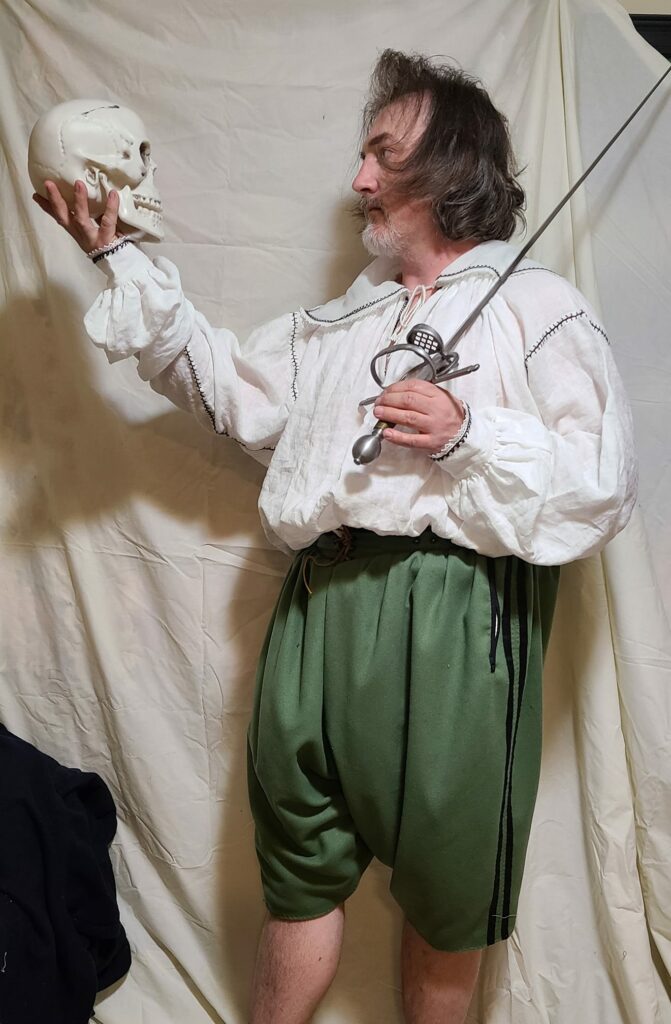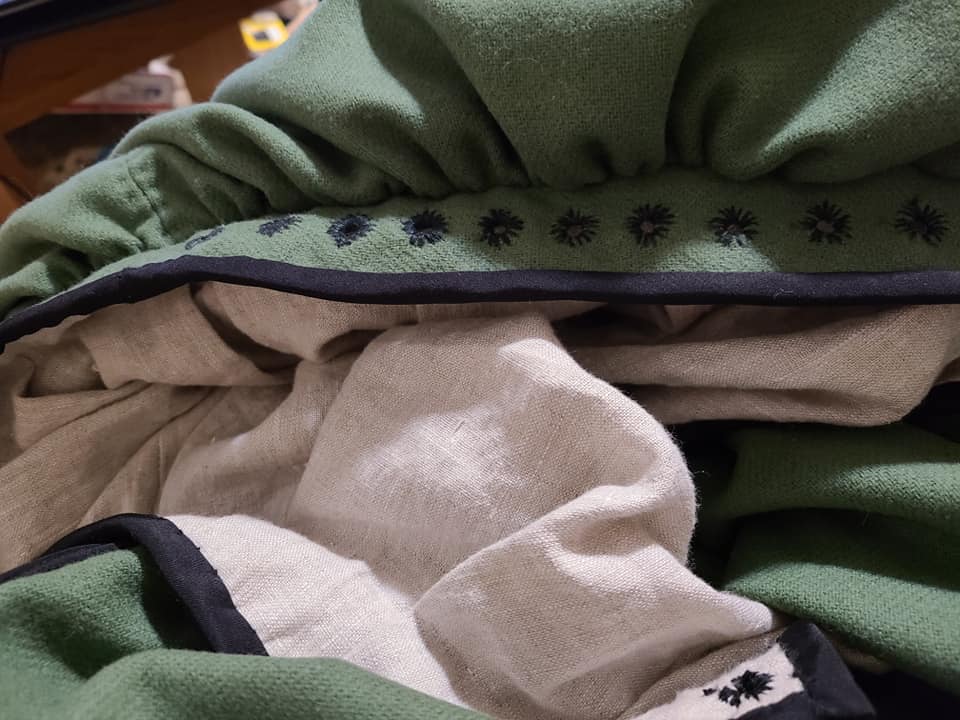The Venetian style hose were completed on Tuesday night. Overall I am happy with the result, but I will be making a few modifications to the draft next time round. The hose are completely handed sewn using linen and silk threads. All of the raw edges are bound in the same silk as the pockets. Hose like these are of a very generic nature, they show up with slight modifications to the style for well over 40 years.

In addition to the leather pockets I have tried to incorporate a number of different construction details seen in extant hose and art work from the end of the 16th and beginning of the 17th century.
Around the waistband of the hose I have installed rolled strips of wool roving to help the hose puff out at the hip. When you look at period art the very wide profile of the waist are evident. I’ve tried several different methods to achieve this and the easiest is to install “bombast”. Bombast was the term used for wadding used in the period for hose and particularly for peascod doublets. It is fairly common to run across “bombast” as a purchased material in tailors receipts.

Once the bombast was installed along the waistband the linen lining was installed. After the lining was stitched in place the raw edge of the waistband was bound in silk.
By the end of the 16th century the prominent codpiece of earlier in the century have fallen out of fashion and instead the front of the hose are closed with a button fly. The buttons are made by whipping silk thread over a wooden core. These are a very simple and fast style of buttons to make compared to the more complex silk wrapped buttons seen on some surviving garments. In this case they wont really be visible due to the deep pleat at the center front of the hose.
Prior to the 1620s the standard way of keeping the hose from falling down was to lace the doublet and hose together with laces or “points”. This is achieved by stitching eyelets into the waistband of the hose. The doublets of the period would have corresponding eyelets sewn into them to allow the lacing. In this case I have stitched 36 eyelets around the waistband. Looking at the extant hose covered in Patterns of Fashion, as well as several other texts, seem to show that later 16th century hose had more eyelets than earlier ones were they were done in pairs around the waistband.

On to the most labor intensive garment….. the doublet!



